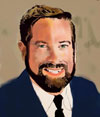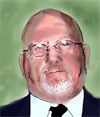June 3, 2005

The Union's Solution for the Future: Get More People In Unions
Edward McElroy is a Rhode Island native and happens to be president of the American Federation of Teachers, the fourth largest labor union in the country (1.3-million-members). In the keynote address at the Institute for Labor Studies 25th anniversary awards dinner, he recalled the legitimate fight in the 60's and 70's to get teachers the types of benefit packages enjoyed by workers in private industry. As reported by the ProJo:
. . .public school teachers did not have the right to bargain collectively for wages and benefits; most teachers did not have family health insurance.This last seems to be a refreshing bit of head-slapping reality, no? Could it be that a union leader, realizing that union members (and public employees who rely on tax dollars to boot) are on the good side of the wage and benefits gap, may be willing to consider closing the gap by conceding some points, such as health care premium co-pays? Nah! Instead, McElroy's solution seems to be: if more people are in unions, then more can enjoy good benefits! (Never mind whether or not the market, both public or private, good bear such outlays).Teacher and other public employee unions were weak, but it was an era when a thrumming manufacturing economy in Rhode Island provided thousands of well-paid, union jobs in the private sector. . .
One of the reasons that public employees won decent health benefits, McElroy said, in the 1960s and 1970s is that most private-sector companies in those days, particularly those with unions, provided health-care benefits to their workers.
Now, McElroy said, "union members are some of the only people who have decent health-care benefits."
And he asked, rhetorically, "Do you think we'll keep them if everybody loses them?"
McElroy reminded his public employee brethren how much organizing help they had from private-sector unions. And he urged public-employee union members to help rebuild the labor movement in the state and nation by working on private-sector organizing campaigns. . .As the article points out, McElroy's AFT has expanded to included other public or quasi-public employees such as health-care workers and college professors. However, the AFT is looking to extend its reach.Organized labor, McElroy acknowledged, is not doing well. "It is a time when union membership is dismally low."
Just 13 million Americans now belong to unions. Only 13 percent of the U.S. workforce is unionized. In the private sector, that number is just 8 percent.
By contrast, about 35 percent of the U.S. workforce was unionized in the 1950s and 1960s.
The exodus of manfacturing from the United States and changes in the economy have crippled the private-sector labor movement. Now, McElroy said, it is time to rebuild.
"We are looking at organizing heretofore unorganized workers," said McElroy in an interview before his speech last night. "There are lot of professional workers out there; the finance industry is largely unorganized, the insurance industry is largely unorganized."The last bit is a laugher, after allIn particular, McElroy said, unions must do more to reach young workers. "Unions do have to go out and organize young workers and connect with young workers in a way we haven't done before," said McElroy. "I wouldn't depend on any political party to organize anybody."
last night's dinner of the Cranston-based Institute for Labor Studies drew its usual crowd of more than 500, made up of union leaders, the state's Democratic political elite and a scattering of business executives.Yes, it certainly seems that the unions won't look to one particular political party at all, does it? But what the heck, at least they are putting forward a solution. . .Sen. Jack Reed and U.S. Rep. Patrick Kennedy addressed the attendees. Democratic legislative leaders were sprinkled throughout the tables, and the two contenders for the Democratic U.S. Senate nomination, Sheldon Whitehouse, the former attorney general, and Secretary of State Matthew Brown, pressed the flesh.



 About Community Crier
About Community Crier

 About Engaged Citizen
About Engaged Citizen Administrator
Administrator



